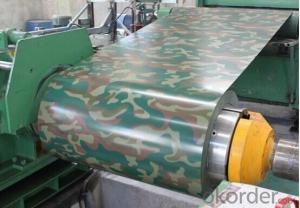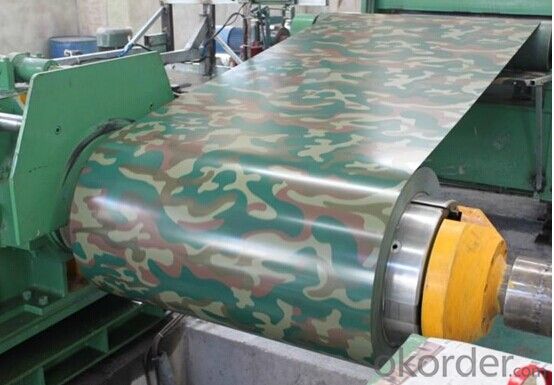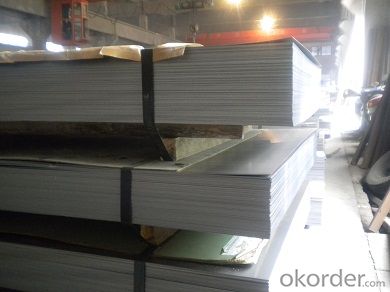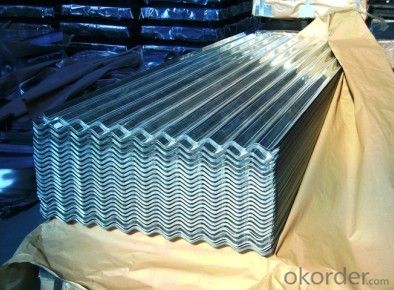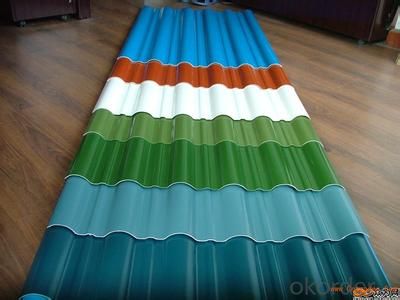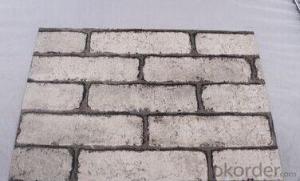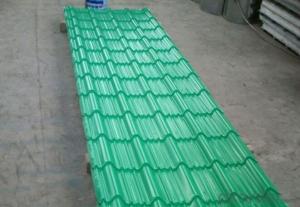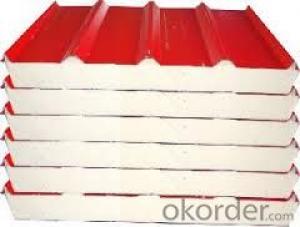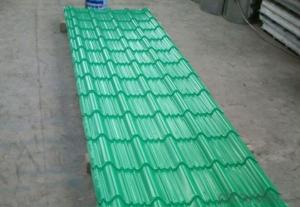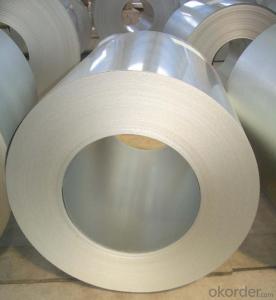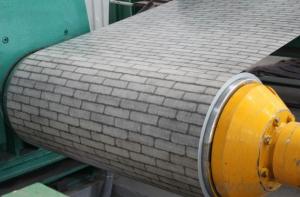Chinese Pre-Painted Galvanized Aluzinc Steel Coil for Roof
- Loading Port:
- China main port
- Payment Terms:
- TT or LC
- Min Order Qty:
- 50 m.t.
- Supply Capability:
- 10000 m.t./month
OKorder Service Pledge
OKorder Financial Service
You Might Also Like
1.Pre-Painted Galvanized/Aluzinc Steel Coil Description:
With GI as base material, after pretreatment (degrease and chemical treatment ) and liquid dope with several layers of
color, then after firing and cooling, finally the plate steel is called pre-painted galvanized (aluzinc) steel.
Pre-painted galvanized steel is good capable of decoration, molding, corrosion resistance.
2.Main Features of the Pre-Painted Galvanized/Aluzinc Steel Coil:
Excellent process capability
Smooth and flat surface
Workability, durability
Excellent heat resistance performance
High strength
Good formability
Good visual effect
3.Pre-Painted Galvanized/Aluzinc Steel Coil Images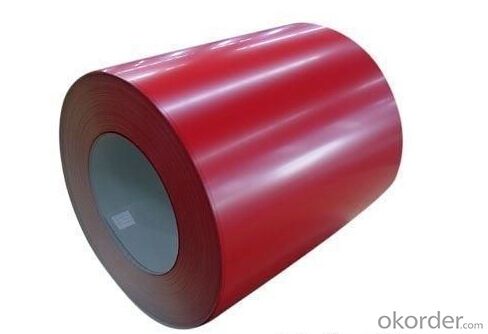
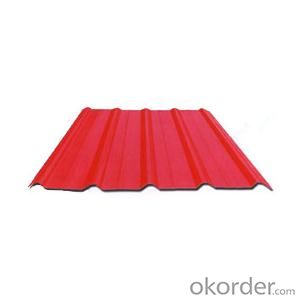
4.Pre-Painted Galvanized/Aluzinc Steel Coil Specification
Standard: AISI, ASTM, BS, DIN, GB, JIS
Grade: DX51D, DX52D
Thickness: 0.17-2.0mm
Brand Name: KMRLON
Model Number: coil
Type: Steel Coil
Technique: Cold Rolled
Surface Treatment: Coated
Application: Boiler Plate
Special Use: High-strength Steel Plate
Width: 20-1250mm
Length: customized
commoidty: pre-painted galvanized steel coil
Thickness: 0.13-4.0mm
width: 20-1250mm
zinc coating: 40-180g/m2
printing thickness: top side: 20+/-5 microns, back side: 5-7 microns
color: all RAL color
surface treatment: color coated
coil weight: 4-7 tons
coil ID: 508/610mm
packaging: standard seaworthy packing
- Q: What are the common methods of cutting-to-length steel coils?
- There are several common methods used for cutting-to-length steel coils, depending on the specific requirements and capabilities of the industry. 1. Shearing: This method involves using a shear blade to cut the steel coil into specific lengths. Shearing is typically used for thinner gauge materials and is a cost-effective method for high-volume production. 2. Slitting: Slitting is a process that involves passing the steel coil through a set of rotating circular blades. These blades cut the coil into narrower strips of the desired width. This method is commonly used for thinner gauge materials and is ideal for producing narrow strips or multiple widths from a single coil. 3. Laser cutting: Laser cutting uses a high-powered laser beam to melt and vaporize the steel coil, resulting in a precise and clean cut. This method is suitable for a wide range of materials and can be used for complex shapes and contours. Laser cutting is often used for high-precision applications and smaller production runs. 4. Sawing: Sawing involves using a saw blade to cut through the steel coil. This method is commonly used for thicker gauge materials and is ideal for cutting large sections or heavy-duty applications. Sawing can be done manually or with the use of automated sawing machines. 5. Rotary cutting: Rotary cutting is a method that uses a rotary shear to cut the steel coil into desired lengths. This process is commonly used for thicker gauge materials and is suitable for high-speed production. Rotary cutting provides a clean and accurate cut, making it a popular choice in many industries. It is important to note that each method has its advantages and limitations, and the selection of the appropriate cutting method depends on factors such as the material thickness, coil width, required precision, production volume, and budget constraints.
- Q: How are steel coils used in the manufacturing of engine mounts?
- Steel coils are used in the manufacturing of engine mounts as they provide strength, durability, and flexibility. These coils are typically used as the main component of the mount, providing the necessary support and stability for the engine. The steel coils are designed to absorb and dampen vibrations, ensuring smooth operation and minimizing the transfer of engine vibrations to the vehicle.
- Q: can anyone help me to find any webpage about lists/types of stainless steel?
- Types of stainless steel There are over 150 grades of stainless steel, of which fifteen are most common. The AISI (American Iron and Steel Institute) defines the following grades among others: - 200 Series—austenitic iron-chromium-nickel-manganese alloys - 300 Series—austenitic iron-chromium-nickel alloys Type 301—highly ductile, for formed products. Also hardens rapidly during mechanical working. Type 303—free machining version of 304 via addition of sulfur Type 304—the most common; the classic 18/8 stainless steel Type 316—Alloy addition of molybdenum to prevent specific forms of corrosion - 400 Series—ferritic and martensitic alloys.
- Q: Can steel coils be coated with fluorescent materials?
- Yes, steel coils can be coated with fluorescent materials.
- Q: Steel Strings on your guitar or nylons? Why?
- I love steel strings on MY guitar because the brand of strings and the type of guitar I have makes the strings softer on my fingers than other people's Steel Stringed guitars. Nylon sounds weird to me.
- Q: What are the different grades of steel used in coils?
- There are several different grades of steel that are commonly used in coils, including low carbon steel, high carbon steel, stainless steel, and advanced high-strength steels. Each grade has its own unique properties and is chosen based on the specific requirements of the application, such as strength, corrosion resistance, and formability.
- Q: How are steel coils coated for color and aesthetics?
- Color and aesthetics can be added to steel coils through a process known as coil coating. This process involves applying a layer of paint or coating material to the surface of the steel coil in order to enhance its appearance and protect it against corrosion. To start the coil coating process, the steel surface is thoroughly cleaned and pre-treated. This step ensures that the surface is free from any contaminants and provides a suitable base for the coating to adhere to. The pre-treatment process may include cleaning, degreasing, and chemical treatment to improve the adhesion and durability of the coating. Once the surface is prepared, the coil is fed through a continuous coating line. In this line, the coating material, usually a liquid paint, is applied to both sides of the steel coil using various methods such as roll coating, spray coating, or electrostatic coating. The coating material is carefully chosen to achieve the desired color, texture, and durability. After the coating is applied, the coil undergoes a curing process. During this process, the coil is heated to allow the coating material to dry and bond to the steel surface. This ensures a strong and long-lasting finish that can withstand exposure to different environmental conditions. Moreover, coil coating technology allows for additional treatments to enhance the aesthetics of the steel coil. For instance, the coil can undergo embossing, where a pattern is pressed onto the surface, creating a textured or three-dimensional appearance. Additionally, other decorative techniques like printing, laminating, or adding metallic effects can be used to achieve specific aesthetic effects. In conclusion, the coil coating process not only adds color and aesthetics to steel coils but also provides a protective layer that increases their lifespan and resistance to corrosion. This makes them suitable for a wide range of applications, including roofing, automotive parts, appliances, and construction materials.
- Q: How are steel coils protected against UV radiation?
- Steel coils are protected against UV radiation through a process known as coil coating. Coil coating involves applying a protective layer of paint or coating to the surface of the steel coil. This coating acts as a barrier between the steel and UV radiation, preventing direct exposure of the metal to the harmful effects of the sun's ultraviolet rays. The protective coating used for steel coils is specially formulated to provide excellent resistance against UV radiation. It typically contains pigments and additives that are designed to absorb or reflect UV light, reducing the amount of radiation that reaches the steel surface. Furthermore, the coating is applied in multiple layers to ensure maximum protection. The first layer, known as the primer, enhances adhesion to the steel surface and provides additional corrosion resistance. The subsequent layers, such as the base coat and topcoat, offer improved durability and UV resistance. In addition to the coating itself, the steel coils can be further protected against UV radiation by storing them in shaded areas or using covers to shield them from direct sunlight when stored outdoors. This additional precaution helps minimize the exposure of the coated steel coils to UV radiation, thereby prolonging their lifespan and maintaining their appearance. Overall, the combination of a high-quality protective coating, proper storage, and handling practices ensures that steel coils are effectively shielded against the damaging effects of UV radiation, allowing them to maintain their structural integrity and aesthetic appeal over an extended period of time.
- Q: How is steel different than iron?How many different kinds of steel are there?What type is the strongest?Which type is the weakest?
- Steel has a higher carbon content than iron. The remaining questions are covered by a whole chapter in any materials text. In short, there are many classes of steels and steel alloys each with its own properties and heat treatments to yield a specific strength and hardness value.
- Q: How are steel coils used in the production of industrial tanks?
- Steel coils are used in the production of industrial tanks as they are rolled and shaped into the desired form, providing the necessary strength and durability for the tank structure.
Send your message to us
Chinese Pre-Painted Galvanized Aluzinc Steel Coil for Roof
- Loading Port:
- China main port
- Payment Terms:
- TT or LC
- Min Order Qty:
- 50 m.t.
- Supply Capability:
- 10000 m.t./month
OKorder Service Pledge
OKorder Financial Service
Similar products
Hot products
Hot Searches
Related keywords
